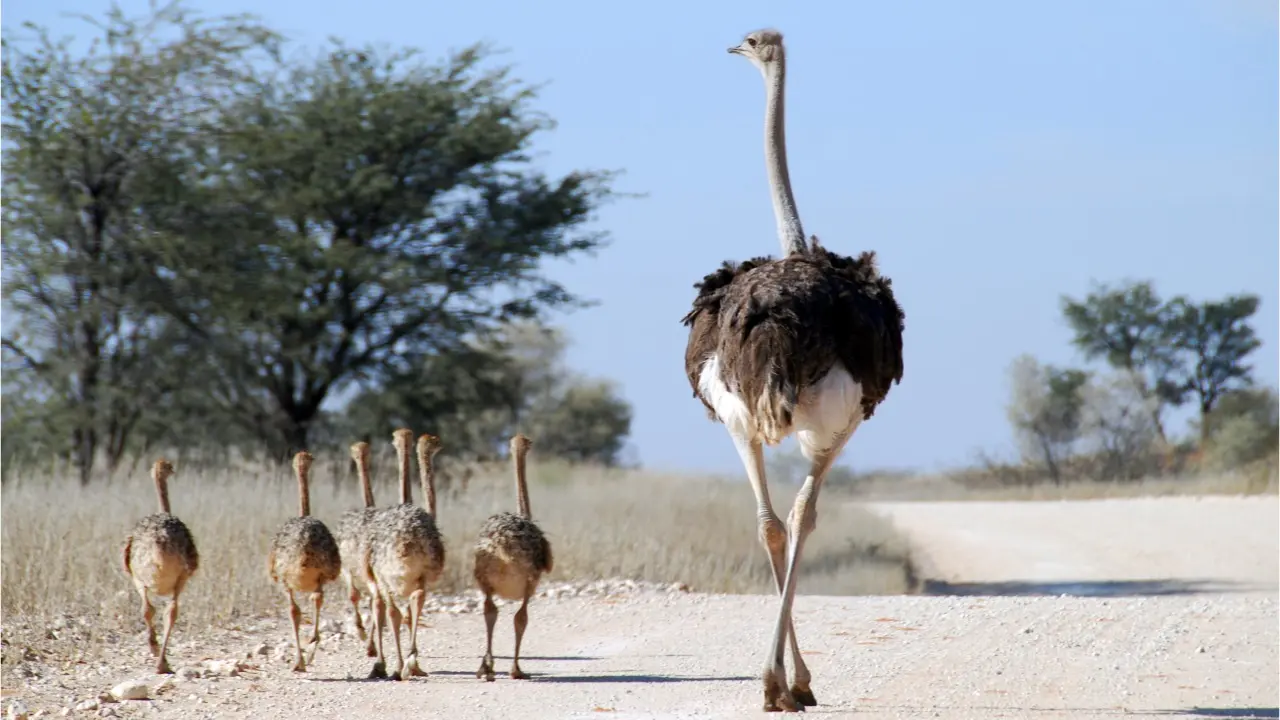The majestic ostrich takes the crown for the most giant bird in the world. Known for its impressive size and unique features, the ostrich is a fascinating creature that captures the imagination. In this article, we delve into the world of the ostrich, exploring its physical characteristics, habitat, behavior, and the significance of its remarkable size.
-
Introduction to the Ostrich
The ostrich (Struthio camelus) is a flightless bird native to Africa and is widely recognized as the world’s largest living bird. It belongs to the ratite family, which includes emus, cassowaries, rheas, and kiwis. The ostrich’s unique features and remarkable size make it a fascinating species that has captivated the curiosity of humans for centuries.
-
Physical Characteristics of the Ostrich
The ostrich boasts several physical characteristics that contribute to its title as the most enormous bird in the world. Adult ostriches can reach a height of up to 9 feet (2.7 meters) and weigh between 220 and 350 pounds (100-160 kilograms). They have long, powerful legs perfectly adapted for running, allowing them to reach speeds of up to 60 miles per hour (97 kilometers per hour).
The most distinguishing feature of the ostrich is its long neck and small head, topped with large, expressive eyes. Although unsuitable for flight, their wings are used for balance and courtship displays. The ostrich’s plumage is predominantly black and white, with males displaying bold black feathers while females possess a more subdued gray-brown plumage.
-
Habitat and Distribution
Ostriches are native to Africa’s open savannahs, grasslands, and semi-desert regions. They are well adapted to withstand the harsh conditions of their habitats, including high temperatures, limited water sources, and sparse vegetation. Ostriches are primarily found in South Africa, Namibia, Botswana, and Kenya.
-
Behavior and Adaptations
Ostriches exhibit fascinating behavioral patterns and adaptations that contribute to their survival. They are social birds, typically living in small groups known as flocks. These flocks often consist of a dominant male, several females, and their offspring.
One of the ostrich’s notable adaptations is its ability to use its powerful legs for defense. When threatened, an ostrich will outrun its predators or deliver a swift and forceful kick with its legs, which can be formidable weapons. Ostriches also have excellent eyesight, allowing them to detect potential threats from afar.
-
The Significance of Size
The ostrich’s remarkable size holds significance in several aspects. Their large bodies are an evolutionary adaptation that provides advantages such as speed and height, enabling them to detect predators and escape swiftly. Additionally, the size of adult ostriches serves as a display of strength and dominance during courtship rituals.
From a cultural perspective, the ostrich’s size has made it a symbol of awe and wonder. Its towering height and commanding presence have inspired stories, folklore, and art across various cultures.
-
Conclusion
The ostrich’s claim to fame as the largest bird in the world is well-deserved. Its impressive size, combined with its unique physical characteristics, make it a genuinely captivating creature. From its long legs built for speed to its powerful kicks and social behavior, the ostrich is a testament to the wonders of nature. As we marvel at its size, we also recognize the adaptations and behaviors that have allowed it to thrive in its African habitats for millions of years.
FAQs
- What is the most enormous bird in the world?
The ostrich holds the title of the most giant living bird on Earth.
- Where are ostriches found?
Ostriches are native to Africa, primarily in South Africa, Namibia, Botswana, and Kenya.
- What are the physical characteristics of ostriches?
Ostriches have long, powerful legs, a long neck, a small head, and large, expressive eyes. They possess black and white plumage, can reach heights of up to 9 feet (2.7 meters), and weigh between 220 and 350 pounds (100-160 kilograms).
- What adaptations do ostriches have?
Ostriches have potent legs for running and a defense structure that includes living in flocks.
- Why is the ostrich’s size significant?
The ostrich’s size is significant for its survival, speed, dominance displays, and cultural symbolism.



